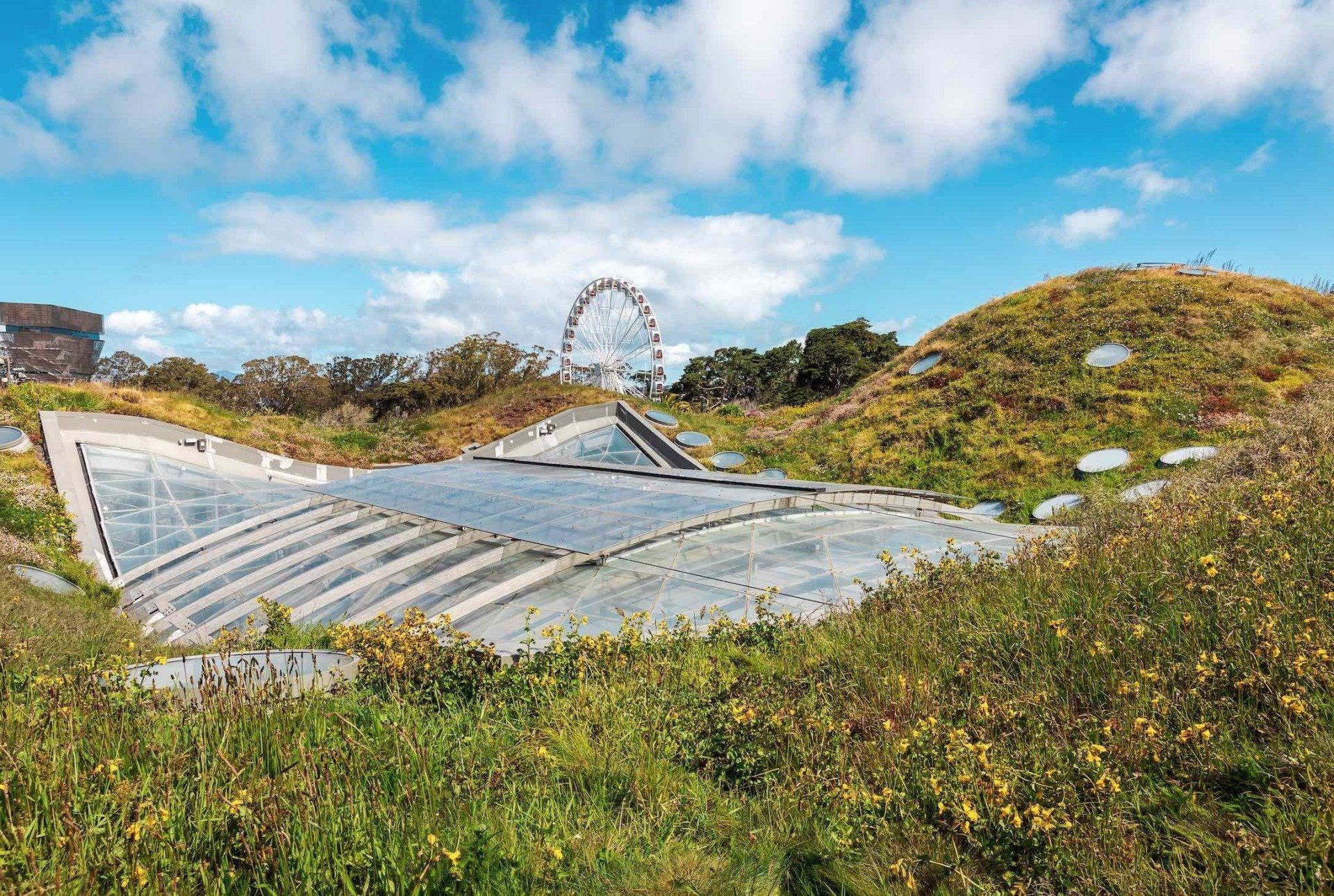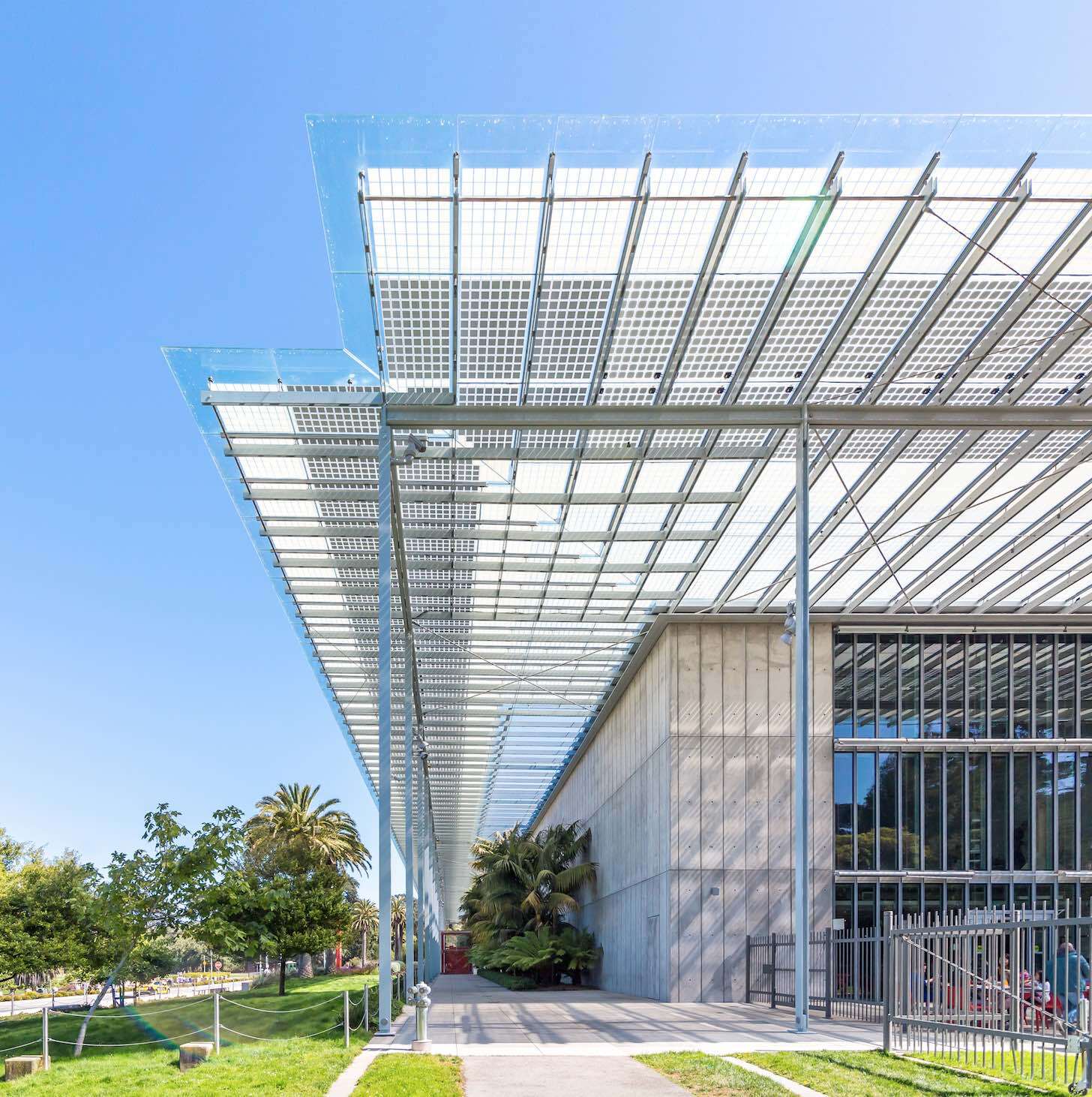THE LIVING ROOF OF THE
CALIFORNIA ACADEMY OF SCIENCES
The California Academy of Sciences is a research institute and natural history museum in Golden Gate Park in San Francisco, California. The Academy owns more than 46 million specimens and is one of the largest and most spectacular museums in the world. The Academy was founded in 1853 as a learned society and still conducts research today.
At the same time, the Academy is a masterpiece of sustainable architecture, employing a variety of innovative features and practices to minimise its environmental footprint.
THE STORY
One evening in 1853 - just three years after California joined the United States - seven men gathered in a candlelit room in San Francisco and founded the first scientific academy west of the Atlantic coast. More and more research specimens were collected and so a museum was opened on Market Street.
When the great earthquake of 1906 rocked the city, the academy's home - and collection, except for a handful of specimens - was lost. At the time, a two-year expedition of the Academy was in the Galapagos Islands to collect material that would one day form the basis of the institution's new collections.
In 1916, the Academy was located in Golden Gate Park, where it expanded over the decades to include North American Hall, Steinhart Aquarium, Simson African Hall, Science Hall, Morrison Planetarium and more. But in 1989, the Loma Prieta earthquake shook the area again and caused extensive damage, so the Academy needed a new building again.
THE NEW ACADEMY
The new Academy was designed by one of the world's greatest architects, Renzo Piano. The jury that awarded him the Pritzker Prize in 1998 wrote: "Piano achieves a rare fusion of art, architecture and engineering in a truly remarkable synthesis. He celebrates structure in a perfect union of technology and art."
In remodelling the Academy for the 21st century, the Academy aimed to preserve the historic legacy of the old building but at the same time develop an innovative design that reflects the beauty and interdependence of the natural world while addressing the environmental issues associated with conservation.
THE CONSTRUCTION
The Academy was clear that the new building was an embodiment of its mission to explore, explain and preserve life. Therefore, the Academy selected demolition materials from 12 buildings of the old Academy. Thus, 90% of the old building was recycled.
This included:
32,000 tonnes of sand from the foundation excavation was used for dune remediation projects in San Francisco.
12,000 tonnes of steel were recycled and went to Schnitzer Steel.
9,000 tonnes of concrete were reused in road construction in Richmond
120 tonnes of green waste was recycled on site
Environmentally friendly materials were used in the construction of the new building. Instead of the usual fibreglass or foam insulation, a thick cotton batting made from recycled blue jeans was chosen.
In addition, the concrete predominant in the new museum is 15 per cent fly ash (a recycled by-product of coal burning) and 35 per cent slag (the glassy waste product of metal extraction from ores). The use of recycled material avoided more than 5 375 tonnes of carbon emissions. Ninety-five per cent of the building's steel came from recycled sources, and 50 per cent of the wood used was harvested from sustainably managed forests. At least 20 per cent of the building materials are locally sourced and manufactured within 500 miles of the Academy, reducing transport costs and supporting the regional economy.
THE LIVING ROOF
For the green roof of the California Academy of Science, Renzo Piano was inspired by the seven great hills of San Francisco: Telegraph Hill, Nob Hill, Russian Hill, Rincon Hill, Mount Sutro, Twin Peaks and Mount Davidson (Wikipedia). The living roof is the heart of the Academy. Weather stations on the roof monitor wind, rain and temperature fluctuations to control the building's automated systems and skylights. This is important for the temperatures of the rainforest inside the academy and the piazza inside. In addition, natural light streams into the exhibition spaces.
The seven hills of the roof are lined with 50,000 porous, biodegradable plant trays made of tree sap and coconut shells, surrounded by solar panels. An estimated 1.7 million plants fill the trays, their roots intertwining to create an oasis for birds, insects, humans and other creatures.
THE POWER OF GREEN
The Living Roof provides excellent insulation (reducing energy needs for heating and cooling), captures 100% of excess rainwater and converts carbon dioxide into oxygen.
It is also used for everything from observing stars and solar eclipses to exploring the much smaller world of bees for numerous educational programmes.
The Living Roof also boasts the densest concentration of native wildflowers in San Francisco.
WHERE
California Academy of Sciences
Golden Gate Park
55 Music Concourse Drive
San Francisco, CA 94118
www.calacademy.org
Exterior - California Academy of Sciences








